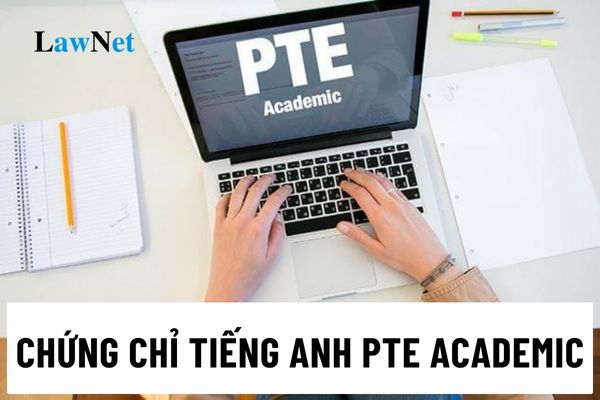What are the equivalent levels of PTE Academic English Certificates and the Vietnam's 6-level Framework for Foreign Language Proficiency?
What are the equivalent levels of PTE Academic English Certificates and the Vietnam's 6-level Framework for Foreign Language Proficiency?
On August 30, 2024, the Minister of Education and Training issued Decision 2383/QD-BGDDT in 2024 recognizing the levels of the Pearson Test of English Academic (PTE Academic) certificates as equivalent to the levels of the 6-level Foreign Language Proficiency Framework for Vietnam for use in admission and training in higher education.
>> See Decision 2383/QD-BGDDT in 2024: Download
The equivalenct levels of the PTE Academic English certificates and the 6-level Foreign Language Proficiency Framework for Vietnam are as follows:
| 6-level Foreign Language Proficiency Framework | PTE Academic | |
| Primary | Level 1 | 10-29 |
| Level 2 | 30-42 | |
| Intermediate | Level 3 | 43-58 |
| Level 4 | 59-75 | |
| Advanced | Level 5 | 76-84 |
| Level 6 | 85-90 |

What are the equivalent levels of PTE Academic English Certificates and the Vietnam's 6-level Framework for Foreign Language Proficiency? (Image from the Internet)
What are regulations on the the 6-level Foreign Language Proficiency Framework for Vietnam issued by the Minister of Education and Training?
According to subitem 1 of Section 4 of the 6-level Foreign Language Proficiency Framework for Vietnam (Proficiency Framework) issued together with Circular 01/2014/TT-BGDDT, the proficiency framework consists of three levels (Primary - Intermediate - Advanced).
Specifically: general description of the language proficiency levels is as follows:
| General Description |
| Level 1 - Elementary Students are able to understand and use familiar everyday expressions and basic phrases aimed at the satisfaction of needs of a concrete type. They can introduce him/herself and others, they can ask and answer questions about personal details such as where he/she lives, people he/she knows, and things he/she has. They can interact in a simple way provided the other person talks slowly and clearly and is prepared to help. |
| Level 2 - Primary Students can understand sentences and frequently used expressions related to areas of most immediate relevance (e.g., very basic personal and family information, shopping, local geography, employment). They can communicate in simple and routine tasks requiring a simple and direct exchange of information on familiar and routine matters. They can describe in simple terms aspects of his/her background, immediate environment, and matters in areas of immediate need. |
| Level 3 - Intermediate Students can understand the main points of clear standard input on familiar matters regularly encountered in work, school, leisure, etc. They can deal with most situations likely to arise whilst travelling in an area where the language is spoken. They can produce simple connected text on topics that are familiar or of personal interest. They can describe experiences and events, dreams, hopes, and ambitions and briefly give reasons and explanations for opinions and plans. |
| Level 4 - Intermediate Students can understand the main ideas of complex text on both concrete and abstract topics, including technical discussions in his/her field of specialization. They can interact with a degree of fluency and spontaneity that makes regular interaction with native speakers quite possible without strain for either party. They can produce clear, detailed text on a wide range of subjects and explain a viewpoint on a topical issue giving the advantages and disadvantages of various options. |
| Level 5 - Advanced Students can understand a wide range of demanding, longer texts and recognize implicit meaning. They can express him/herself fluently and spontaneously without much obvious searching for expressions. They can use language flexibly and effectively for social, academic, and professional purposes. They can produce clear, well-structured, detailed text on complex subjects, showing controlled use of organizational patterns, connectors, and cohesive devices. |
| Level 6 - Advanced Students can understand with ease virtually everything heard or read. They can summarize information from different spoken and written sources, reconstructing arguments and accounts in a coherent presentation. They can express him/herself spontaneously, very fluently, and precisely, differentiating finer shades of meaning even in more complex situations. |
What are purposes of the 6-level Foreign Language Proficiency Framework for Vietnam?
Based on Section 1 of the Proficiency Framework issued together with Circular 01/2014/TT-BGDDT, the 05 purposes of creating the 6-level Foreign Language Proficiency Framework for Vietnam include:
- Serving as a unified basis for the competency requirements for all foreign languages taught within the national education system.
- Providing a basis for developing curricula, compiling or selecting textbooks, teaching plans, other foreign language teaching materials, and setting criteria for testing, examination, and assessment at each educational level, ensuring connectivity in foreign language training between educational levels.
- Serving as a basis for teachers and lecturers to select and implement content, teaching methods, testing, and assessment to meet the requirements of the training programs.
- Helping learners understand the content and requirements for each level of foreign language proficiency and self-assess their skills.
- Facilitating educational cooperation, exchange, and recognition of degrees and certificates with countries applying the Common European Framework of Reference (CEFR).

